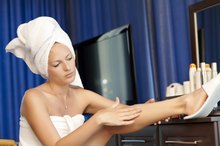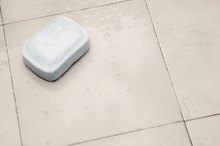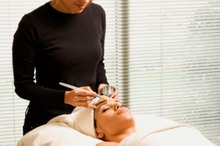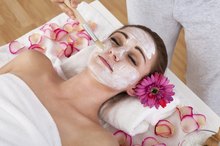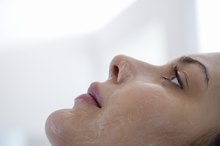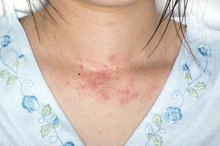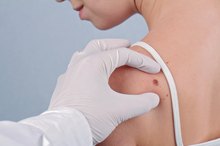Chemical Peels & Hydroquinone
A chemical peel can help to address skin discoloration issues such as melasma, age spots or liver spots, as well as discolorations caused by chronic acne. To enhance the effects of the peel, the bleaching agent hydroquinone is sometimes added to the peeling agent 23. However, since hydroquinone can trigger allergic reactions in some people, certain precautions must be taken to avoid adverse effects 23.
Chemical Peel Procedure
The kind of chemical peels most commonly combined with hydroquinone utilize mild alpha hydroxy acids to achieve a light to medium exfoliation of the upper layers of the skin 23. This nonsurgical procedure takes approximately one hour and can be performed on the face, chest, neck or hands. Chemical peel recipients typically experience mild stinging or burning during the procedure, but anesthesia is usually not necessary. If you are particularly sensitive to pain, a sedative can be administered prior to the treatment, notes the Perfect Skin Laser Center website.
- The kind of chemical peels most commonly combined with hydroquinone utilize mild alpha hydroxy acids to achieve a light to medium exfoliation of the upper layers of the skin 2.
- If you are particularly sensitive to pain, a sedative can be administered prior to the treatment, notes the Perfect Skin Laser Center website.
About Hydroquinone
AmLactin Lotion Side Effects
Learn More
Hydroquinone is a bleaching agent that prevents the production of skin pigment by blocking the enzyme tyrosinase, a necessary component in melanin synthesis 23. In some people, this medication can cause adverse effects, including hives, swelling of the treated area, severe burning or itching, or difficulty breathing. Therefore, DermNet NZ says it is important to have your dermatologist administer a patch test before undergoing a chemical peel with this ingredient to determine if a hydroquinone sensitivity is present 23.
Contraindications
The Perfect Skin Laser Center recommends that pregnant or nursing women forgo having a chemical peel with hydroquinone, since the effects of the medication on an unborn or nursing baby are unknown 23. Also, tell your dermatologist if you have liver or kidney disease or are allergic to any drugs, as these conditions might present complications. If you are currently using Retin-A, your dermatologist may recommend that you stop use of the medication for five days prior and five days following your chemical peel with hydroquinone to reduce the likelihood of increased irritation 23.
Aftercare
Care of Skin After Cryosurgery
Learn More
After receiving a chemical peel with hydroquinone, you may experience redness of the treated area for up to 12 hours and skin flaking for up to five days 23. Do not pick or pull at the loose skin, as this can cause discoloration. Also, avoid using other medications, such as other AHA topicals, unless directed by your dermatologist. For the two days following a chemical peel, do not engage in activities that raise your body temperature or induce perspiration, and keep the treated area away from extreme hot or cold temperatures. Additionally, apply adequate sunscreen when outside or wear protective clothing, says Perfect Skin Laser Center.
- After receiving a chemical peel with hydroquinone, you may experience redness of the treated area for up to 12 hours and skin flaking for up to five days 2.
- For the two days following a chemical peel, do not engage in activities that raise your body temperature or induce perspiration, and keep the treated area away from extreme hot or cold temperatures.
Cost and Frequency
The North Hawaii Medical Spa recommends a series of six superficial chemical peels with hydroquinone spaced every two to three weeks for optimal results 23. After the initial series, maintenance treatments can be performed every four to six weeks. As of 2010, the cost for a superficial chemical peel ranged between $150 and $300 per session. Since chemical peels are typically administered for cosmetic purposes, insurance does not cover the cost.
- The North Hawaii Medical Spa recommends a series of six superficial chemical peels with hydroquinone spaced every two to three weeks for optimal results 2.
Related Articles
References
Resources
Writer Bio
Based in Los Angeles, Claire McAdams has been writing professionally since 2006. Her work has appeared in "The Tennessean" and also online at MaestroCompany.com and SoCal.com. She holds a Bachelor of Music Degree from Belmont University and a Bachelor of Arts Degree in History and Political Science from King College.
